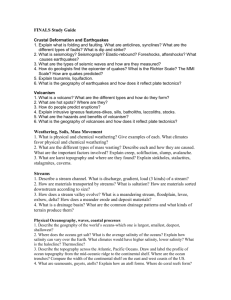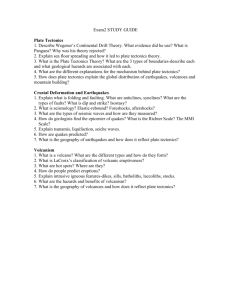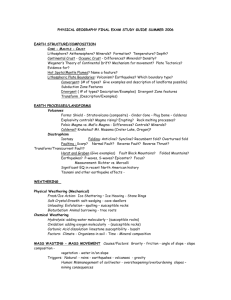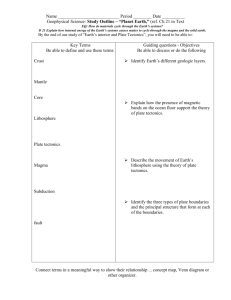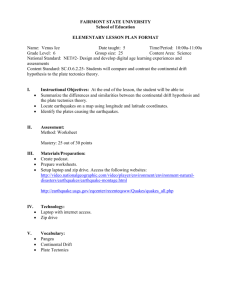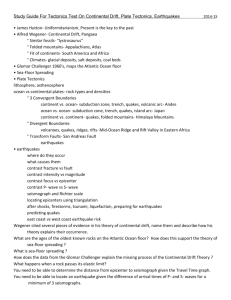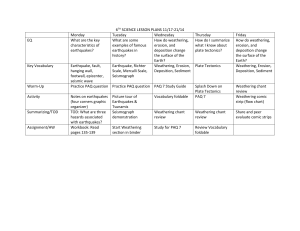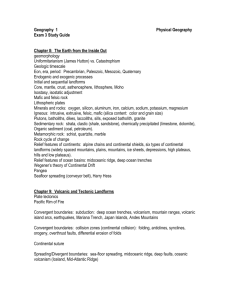Chapter 10 Weathering, Soils, Mass Movement
advertisement
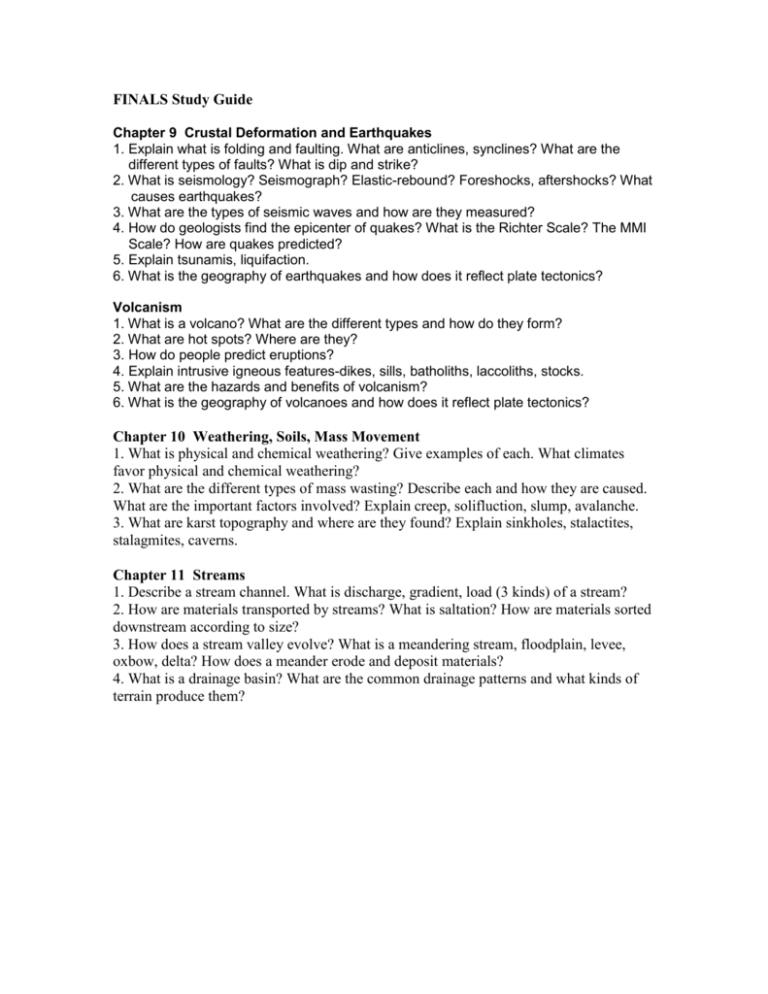
FINALS Study Guide Chapter 9 Crustal Deformation and Earthquakes 1. Explain what is folding and faulting. What are anticlines, synclines? What are the different types of faults? What is dip and strike? 2. What is seismology? Seismograph? Elastic-rebound? Foreshocks, aftershocks? What causes earthquakes? 3. What are the types of seismic waves and how are they measured? 4. How do geologists find the epicenter of quakes? What is the Richter Scale? The MMI Scale? How are quakes predicted? 5. Explain tsunamis, liquifaction. 6. What is the geography of earthquakes and how does it reflect plate tectonics? Volcanism 1. What is a volcano? What are the different types and how do they form? 2. What are hot spots? Where are they? 3. How do people predict eruptions? 4. Explain intrusive igneous features-dikes, sills, batholiths, laccoliths, stocks. 5. What are the hazards and benefits of volcanism? 6. What is the geography of volcanoes and how does it reflect plate tectonics? Chapter 10 Weathering, Soils, Mass Movement 1. What is physical and chemical weathering? Give examples of each. What climates favor physical and chemical weathering? 2. What are the different types of mass wasting? Describe each and how they are caused. What are the important factors involved? Explain creep, solifluction, slump, avalanche. 3. What are karst topography and where are they found? Explain sinkholes, stalactites, stalagmites, caverns. Chapter 11 Streams 1. Describe a stream channel. What is discharge, gradient, load (3 kinds) of a stream? 2. How are materials transported by streams? What is saltation? How are materials sorted downstream according to size? 3. How does a stream valley evolve? What is a meandering stream, floodplain, levee, oxbow, delta? How does a meander erode and deposit materials? 4. What is a drainage basin? What are the common drainage patterns and what kinds of terrain produce them?
